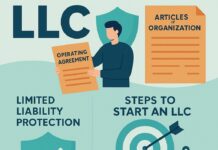A self-employed loan is a great way to get the capital you need for your small business. However, you must understand the different types of loans available to entrepreneurs and how to use them effectively for your business growth. Lenders typically look for steady income for self-employed borrowers, but this can be difficult for sole proprietors and freelancers who need to pay themselves formal payroll. This can make the approval process longer than it would be for a borrower with a traditional job.

Purchase Inventory
Planning for future sales and cash flow needs can be challenging when you own a business. This can lead to unexpected expenses that require you to rely on a self-employed loan to grow your business. Using loans for self employed individuals to purchase inventory can help your business maintain steady revenue during slow times. These loans are also useful if you have seasonal products you need to keep stocked. Generally, you can qualify for inventory financing by demonstrating that your business is well-established and has a strong sales track record. However, this type of loan can be a riskier loan option for lenders, so it’s vital to ensure you’re financially prepared before applying. In addition, many lenders will require you to gather various documents before you submit your application.
Purchase Equipment
Purchasing equipment for your business is essential to getting it off the ground and operating efficiently. While you may be tempted to purchase the equipment, working with a finance company specializing in financing equipment can be more cost-effective. When choosing an equipment financing lender, look for one that offers various financing options. These loans typically have competitive interest rates and long terms. Another option is an equipment lease. This type of financing is less costly than an equipment loan because you do not need to make a down payment or provide collateral. The downside to an equipment lease is that you’ll pay for the equipment over time rather than owning it outright. However, this is the most common way for businesses to obtain financing for equipment. Leasing can also save companies money in taxes because it doesn’t result in a recorded asset on the balance sheet.
Pay Your Taxes
Unlike W-2 employees, self-employed people are responsible for paying their taxes. As a result, they may need to set aside extra money each pay period to cover the tax bill when it comes due. One of the ways lenders evaluate your loan application is by taking a close look at your taxes. For instance, they might require you to prove that your taxes are filed correctly by checking your business’s corresponding tax forms. Use an online tool to track and categorize your business expenses to maximize tax deductions. This will make it easy to find the best tax rate and help you see how much you can save over time. A software package can also save you time on your end-of-the-year tax preparation. Lastly, a spreadsheet can help you keep track of your small business’s most important numbers and ensure you get all tax-related specials.



